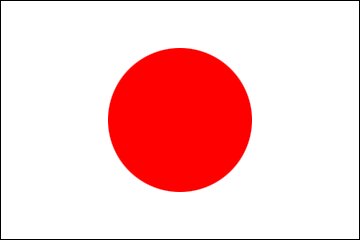16 States of Palau: Kayangel
2025/10/15
An Introduction to Kayangel State
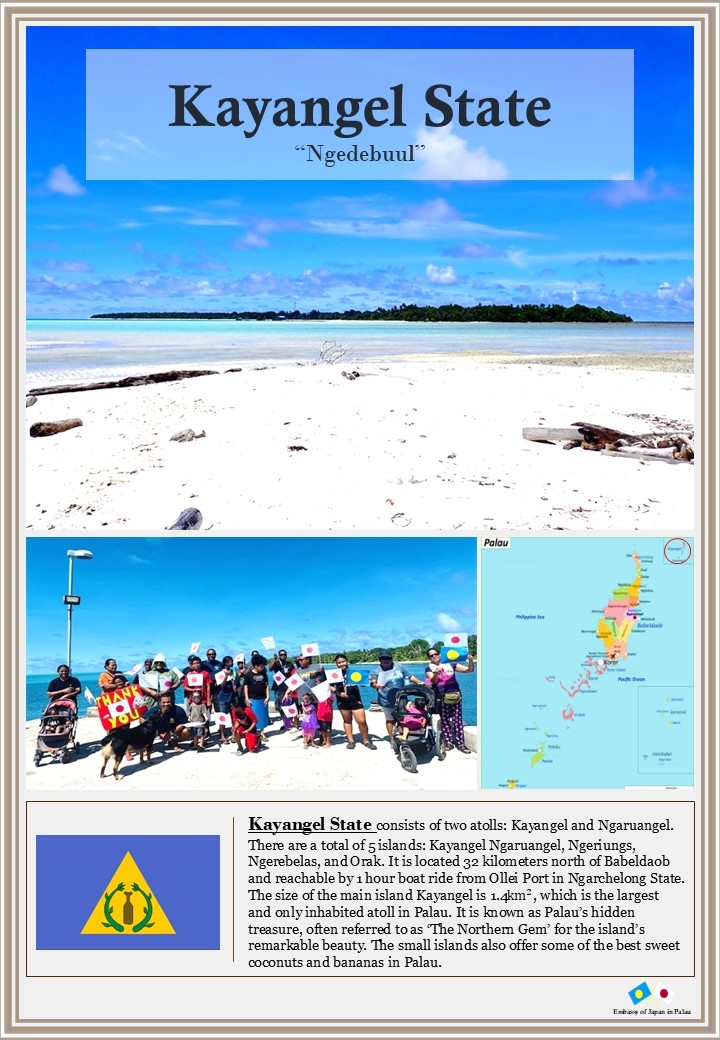
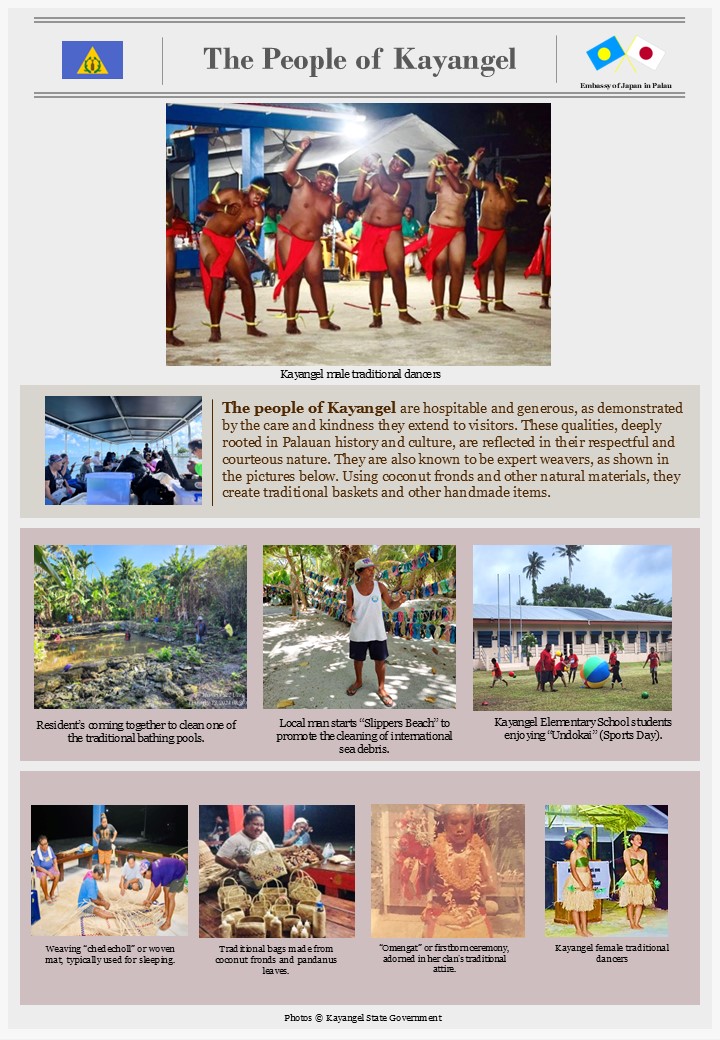
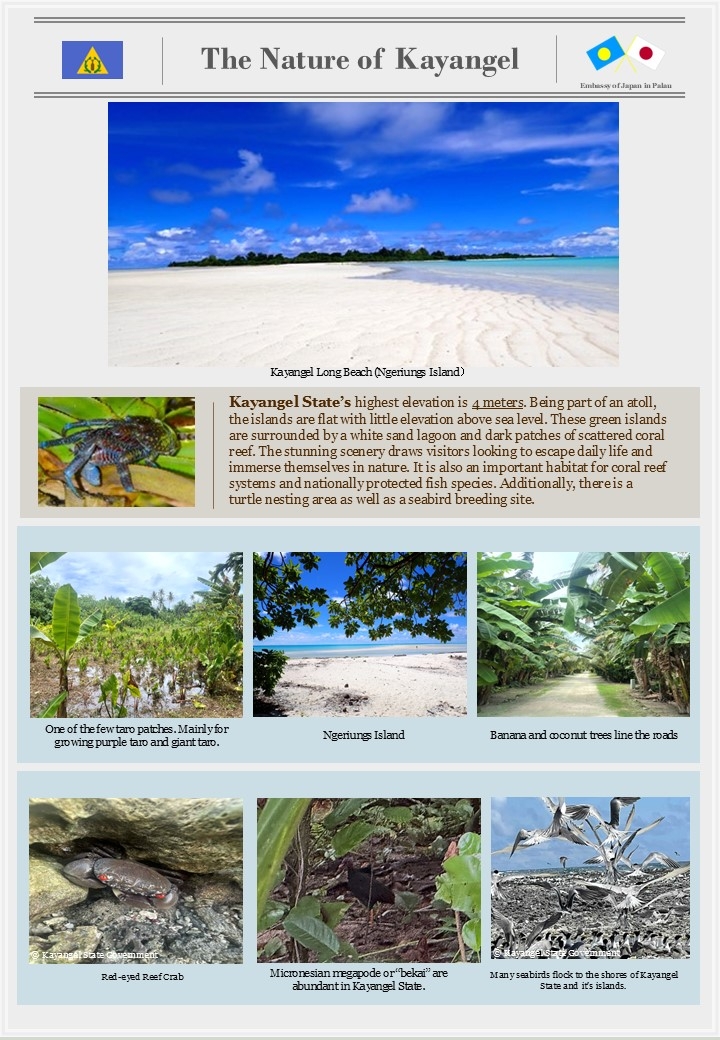
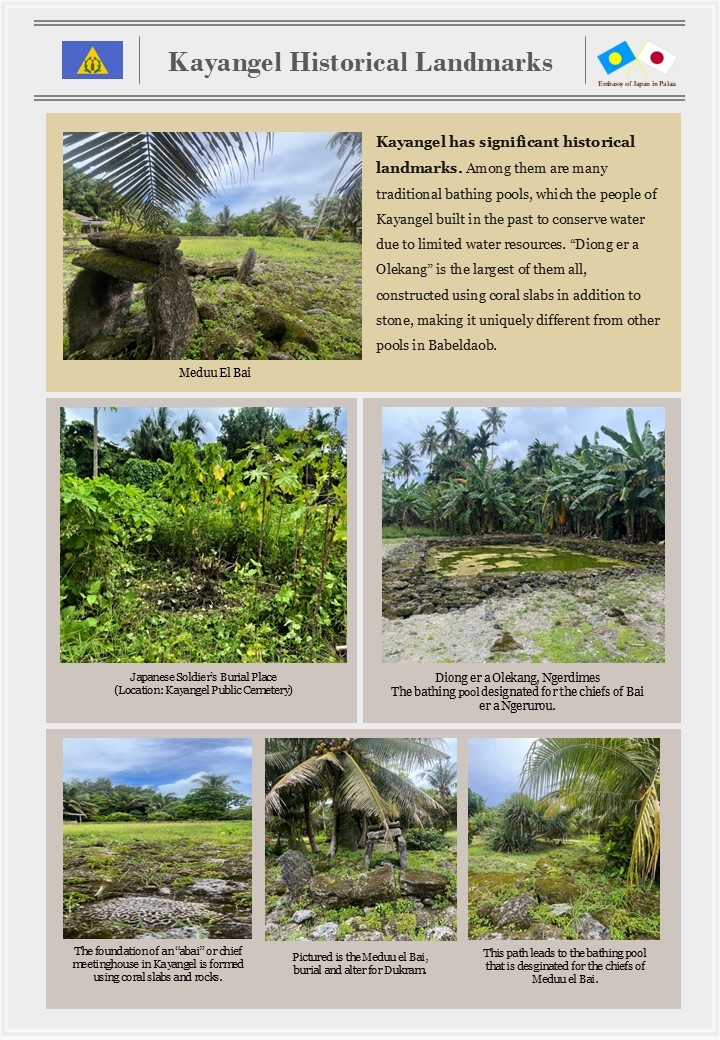
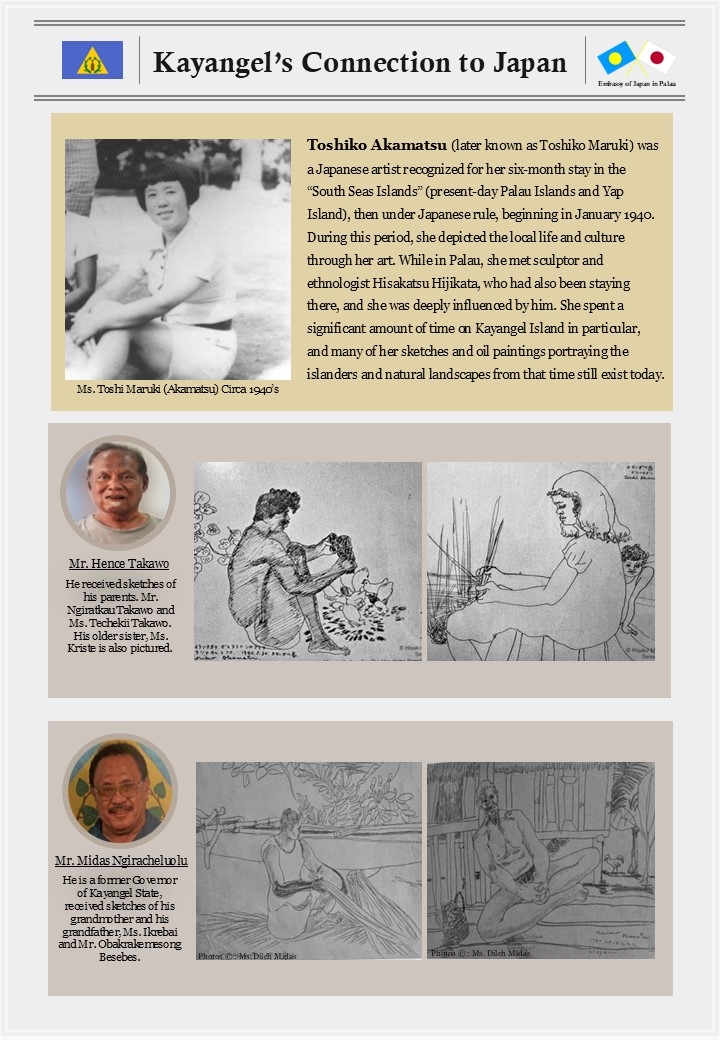

More Historical Landmarks of Kayangel State
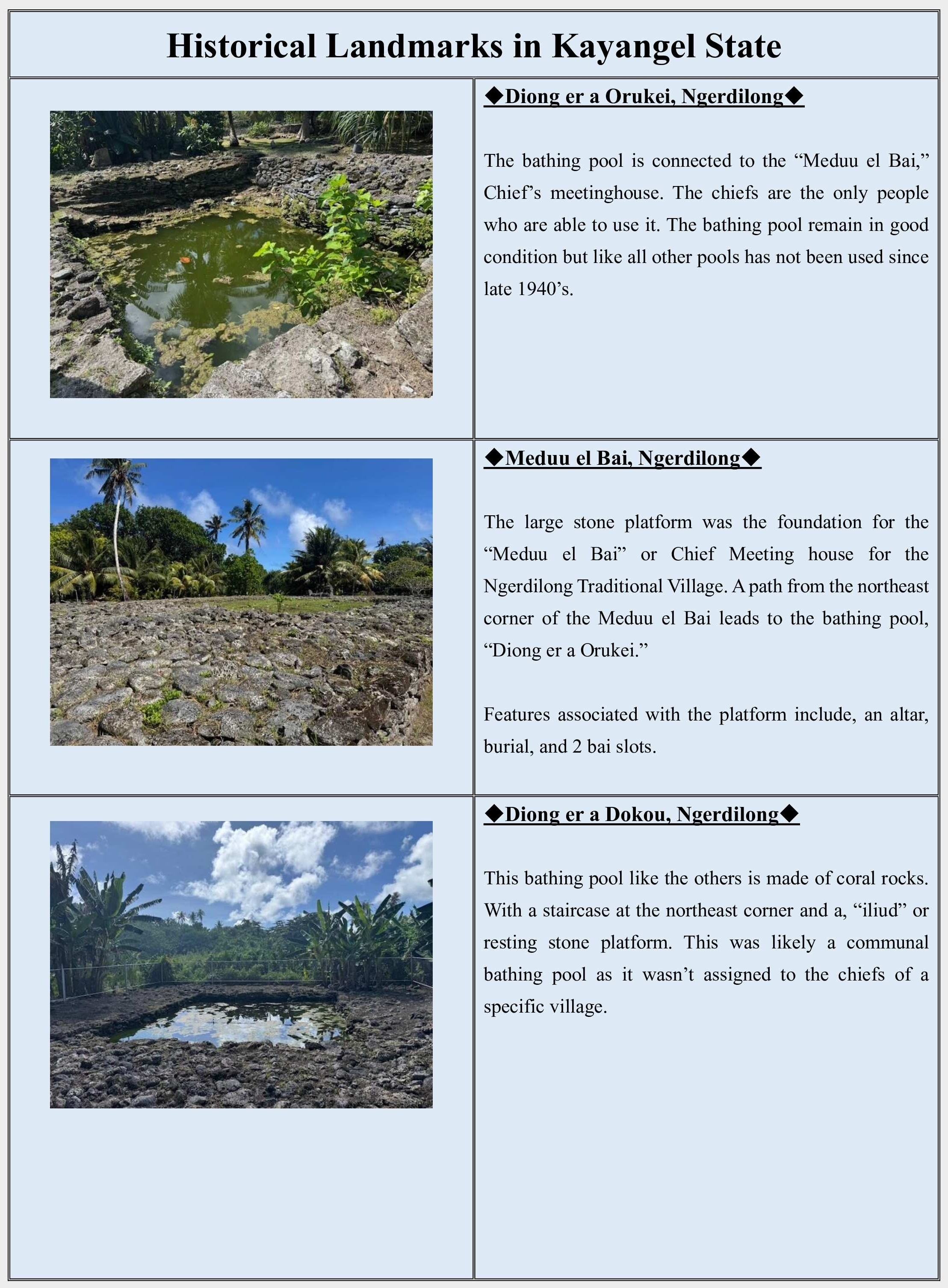

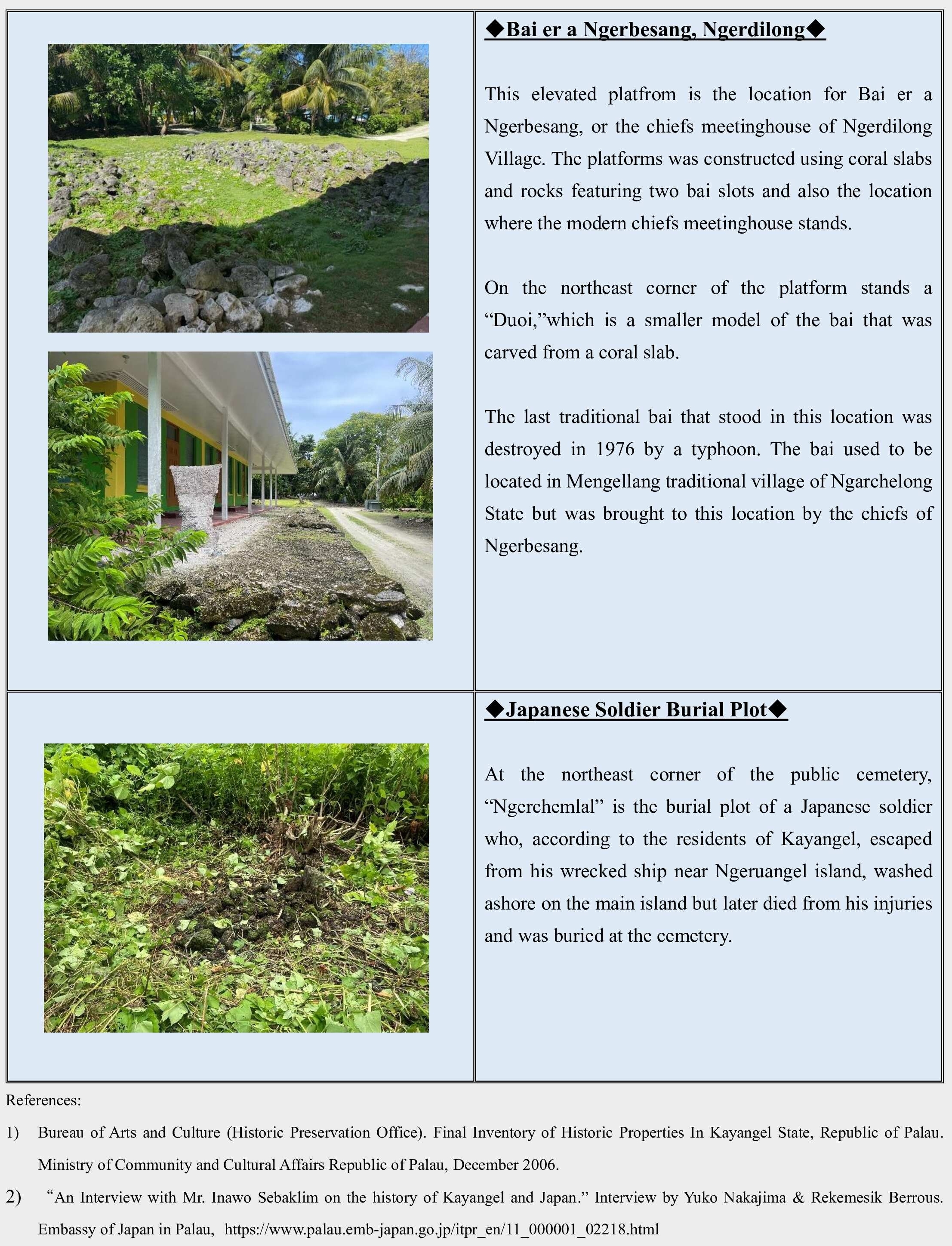
An Interview with Mr. Inawo Sebaklim on the history of Kayangel and Japan

Mr. Inawo Sebaklim, born in 1940 and now 85 years old, a respected elder of Kayangel State, was interviewed on July 25th, 2025. He is blessed with many children, grandchildren, and great-grandchildren. Though now retired for many years, Mr. Inawo played an important role in the Kayangel State Government, having witnessed the signing of the state's constitution and served as a legislator for many years. Although he was born in Ngarchelong State during World War II, he was adopted and raised by his grandparents in Kayangel State.
During the war, the people of Kayangel had been displaced, relocating to Ngarchelong State and Ngaraard State on the orders of Japanese soldiers. Tragically, his father was shot down by a military aircraft while fishing in Ngaraard State. Despite his injuries, he refused to leave the water because he didn’t want his family to see him injured and he eventually succumbed to his wounds in the water.
We asked Mr. Inawo how life was like in Kayangel when he was young and he told us that the island was lively there were many families living in Kayangel at this time, “20 or so homes and all were filled with immediate and extended family.” Nowadays most of these homes have since been abandoned and most have relocated to the main island or overseas.
Mr. Inawo explains that he and his siblings have Japanese names because, at the time, Palau was under Japanese administration and Palauan’s were greatly influenced by them. He further clarifies that his name was actually supposed to be “Hinawo,” but because of his family’s pronunciation, it became “Inawo” instead.
This historical connection to Japan continued into the 1980s, when there was still a Japanese copra business operating in Kayangel. During this time, the people of Kayangel would walk around the island collecting coconuts. Afterwards, representatives would come to pay the villagers for the harvest, which would eventually be processed into copra. When the copra business eventually ended, efforts were made by people from Japan to establish a commercial fishing industry during the 1990’s in Kayangel. They even built a warehouse to store the fish. However, despite these efforts, the fishing industry came to a halt, and today, the warehouse serves only to provide ice for the residents of Kayangel State. Mr. Inawo and his grandson, Mr. Quichocho, informed us that the warehouse is still being maintained by the people of Japan.
Mr. Inawo and his grandson, relayed to us that most the state’s residence consist of retirees and grandchildren, while people of working age prefer to live on the main island or even overseas to find better job opportunities because there are few jobs available on Kayangel. Unlike earlier years, where there were many families staying on the island, the population is only around 60 people compared to the few hundreds before.
Mr. Inawo’s life reflects the history of Kayangel and the strong connection between Palau and Japan. From the struggles of World War II to his later years as a public servant, his experiences show the strength and resilience of his community. He was happy to share his knowledge about Kayangel and its connections Japan, especially since many people don’t know much about it.
